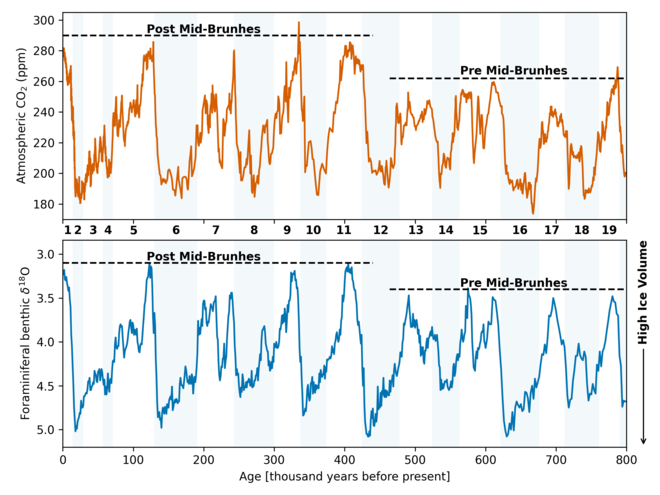In a broad sense, the causes fell out of
obliquity deviations and the resulting solar
insolation effects (as recruited and exemplified by the
Milankovitch cycles). With contingent contributions from fluctuating greater and lesser biological activity affecting CO2 levels (along with ocean absorption). The former
possibly an influential factor in Marine Isotope Stage 11.
But a lack of sufficiently long records, especially at certain latitudes, makes more specific explanations highly speculative and diverse (without consensus). One analysis from well
over a decade ago even questions the universal reach of it, suggesting "
that the MBE is not a global climatic transition but is restricted to specific regions, in particular the higher latitudes of the southern Hemisphere. Further work is needed to understand the regional variability and cause of the MBE".
A "7 foot tall heidelbergensis" is either myth, exaggeration, or if there were actual fossil remnants of such an individual -- it would still be highly suspect as an outlier (not reflecting a common characteristic of the majority).
While there is the chronological coincidence between the environmental changes and human evolution (suggesting a link), there doesn't seem to be a robust smoking gun yet to solidly lift this from correlation to causation. Though migration into new areas and climate changes chaotically shaking-up the scattered populations off and on certainly beckons as an enticing recipe for modifications and adaptions.[1] Humans "proper" sprang from Africa rather than the Euro-Asian-Oceanic turmoil, albeit we do carry genes from archaic members in those regions.
- - - footnote - - -
[1]
Population Bottlenecks and Pleistocene Human Evolution
https://academic.oup.com/mbe/article/17/1/2/975516?login=false
In spite of oscillating population sizes across the temperate zones everywhere, perhaps corresponding to the glaciations and their effects, the archaeological record reflects increased habitat specialization and continually larger population numbers worldwide. However, the oscillations were significant. For instance, both central/western Europe and southern Africa were largely depopulated in the Late Pleistocene, Europe several times...
_


